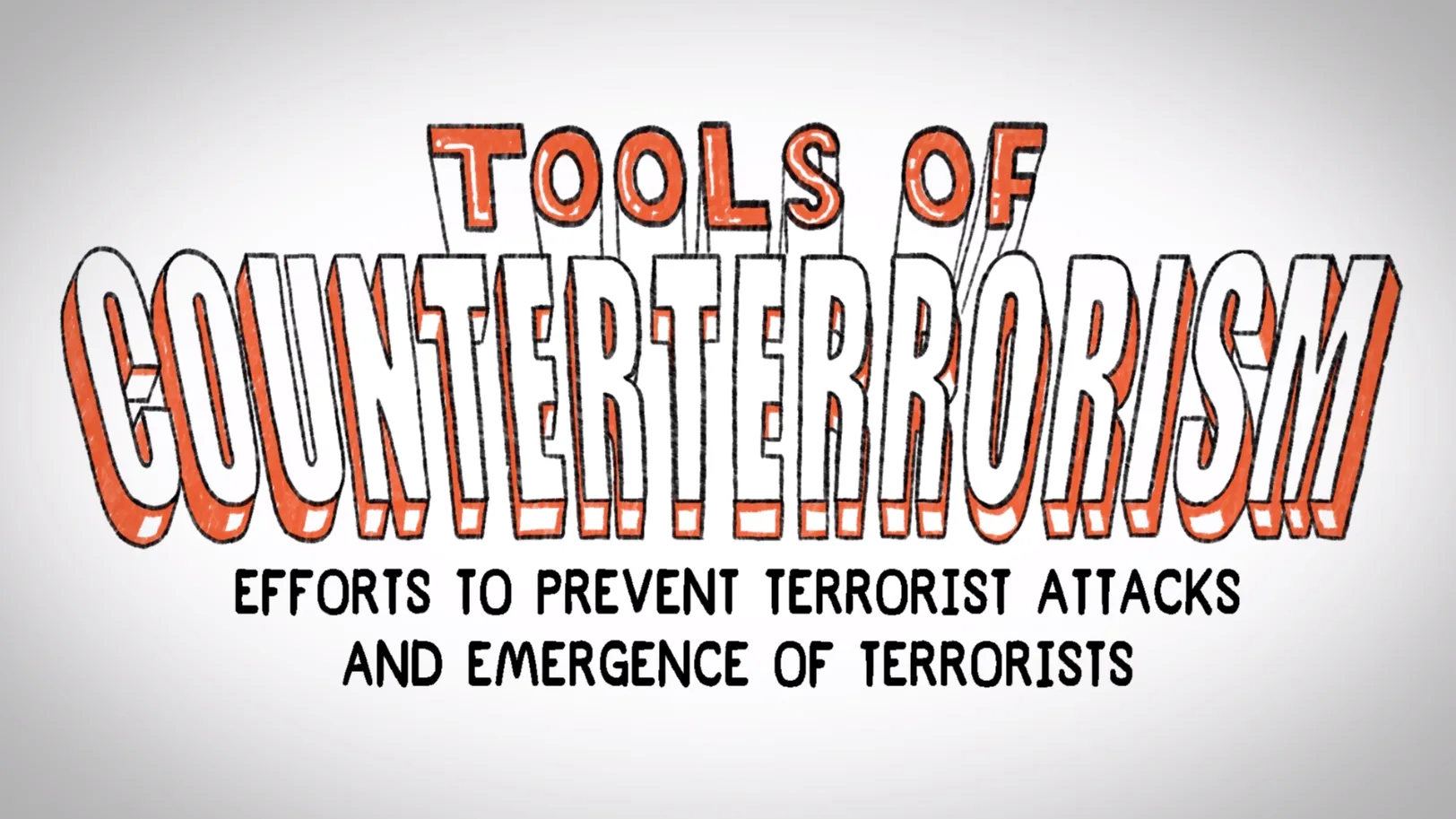Tools of Counterterrorism
What is counterterrorism? Learn how governments try to prevent terrorist attacks in this video on terrorism.
Defining counterterrorism goals
Counterterrorism works to both defeat current terrorist threats and reduce the likelihood of future ones. That two-part mission requires a range of tactical and strategic policy tools.
Video Transcript: How Do Governments Try To Prevent Terrorist Attacks?
Counterterrorism refers to the ways in which governments try to prevent terrorist attacks and the emergence of terrorists. Generally, there are two basic approaches: tactical counterterrorism and strategic counterterrorism.
Tactical counterterrorism
Tactical counterterrorism aims to actively disrupt terrorist plots and Networks. It relies on law enforcement agencies collecting and sharing intelligence, covert cyber operations, and to a lesser extent, targeted strikes against individual terrorists. A purely tactical strategy, however, can lead to global “whack-a-mole,” with new threats cropping up as soon as existing ones are defeated.
Strategic counterterrorism
That’s when strategic counterterrorism comes into play. This approach focuses on reducing the appeal of extremism and on limiting the financial resources of terrorists. Strategic counterterrorism programs work with educational, religious, and community partners to make terrorism seem like an unattractive option to the mostly young people who are targeted for recruitment by terrorist networks.
The financial aspect of strategic counterterrorism focuses on limiting the funds available to terrorists. This can take many forms. Governments try to stop individuals from contributing directly to terrorist groups. They also rely on domestic and international banks to identify suspicious transactions around the world.
With counterterrorism, it’s not an either-or situation. Tactical and strategic policies work best when they complement each other.
Making people less vulnerable to terrorist attacks
The truth, however, is that terrorism can’t be fully eliminated. Terrorists will likely always exist.
So a large part of a government’s counterterrorism strategy should also include ways to make its population less vulnerable when terrorism does occur. This includes things like adding more security to important buildings,
and erecting concrete barriers on streets to make it difficult for terrorists to strike pedestrians, even requiring you to take off your shoes off at the Airport.
Resilience to terrorist attacks
Governments must also prioritize resilience in the face of an attack, to minimize the damage and to speed recovery. This includes developing comprehensive plans for first responders and communities, and stockpiling medical supplies as well as items that are costly and hard to produce quickly, such as critical electricity grid components.
Planning for the worst
Having a toolbox of tactical and strategic policies can help counter the threat of terrorism, but planning for the worst allows a government to contain the fear that terrorists seek to spread.
